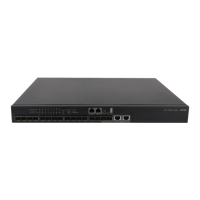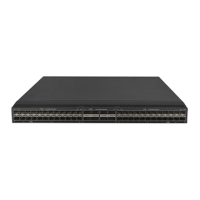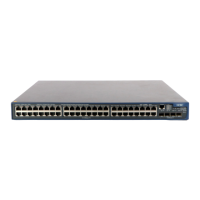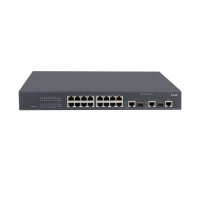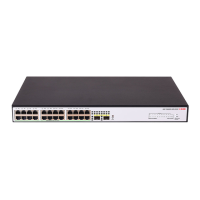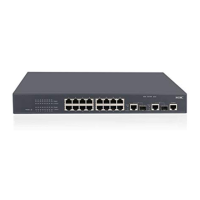42
3. Verify that the port is not blocked:
{ Execute the display stp brief command to verify that STP does not set the state of the
port to discarding. When the port is in discarding state, it cannot forward traffic. As a best
practice, disable STP on the port, or configure the port as an edge port if the port is
connected to a terminal device.
{ If the port belongs to an aggregation group, execute the display link-aggregation
verbose command to identify the port status. When the port is an Unselected port, it
cannot forward traffic. Locate the reasons why the port is in Unselected state. For example,
the attribute configurations of the port are different from the configurations of the reference
port.
{ Identify whether the port is blocked by smart link. Use the display smart-link group
command to view the port status. If the state of the port is STANDBY or DOWN, the port
cannot forward traffic.
− If the state of the port is DOWN, locate the reason for the port to be down. The possible
reasons include: its uplink device is configured with monitor link, the link of the port fails,
or the port is shut down. Further troubleshoot the issue based on the reason for the port
to be down.
− If the state of the port is STANDBY, perform an active/standby switchover in the smart
link group.
4. Examine the following configurations that might cause packet loss:
{ VLAN configuration—Execute the display this command in Ethernet interface view to
verify that the port is in the VLAN of the packets. If it is not, add the port to the VLAN.
{ Blackhole MAC address entries—Execute the display mac-address blackhole
command to display blackhole MAC address entries. If the packets are discarded because
they match a blackhole MAC address entry, delete the entry. To delete the blackhole MAC
address entry, execute the undo mac-address blackhole mac-address vlan
vlan-id command.
{ Rate limit—Execute the display qos lr interface command to display the rate limit
configuration on the port. If rate limit is configured on the port, make sure the committed
information rate (CIR) and the committed burst size (CBS) are appropriate. To adjust the
CIR and CBS values, execute the qos lr
{ inbound | outbound } cir
committed-information-rate
[ cbs committed-burst-size ] command.
{ Storm suppression—Execute the display this command in Ethernet interface view to
display the configuration of storm suppression. Storm suppression includes broadcast
suppression, multicast suppression, and unknown unicast suppression. To adjust the
suppression thresholds, execute the broadcast-suppression,
multicast-suppression, and unicast-suppression commands, respectively.
5. Verify that no congestion occurs by using the display qos queue-statistics
interface command.
If congestion occurs, locate and resolve the issue by referencing related congestion
management documents.
6. If the issue persists, contact H3C Support.
Related commands
This section lists the commands that you might use for troubleshooting Layer 2 packet loss failure.
Command Description
display interface
Displays Ethernet interface information.
display dot1x
Displays information about 802.1X.
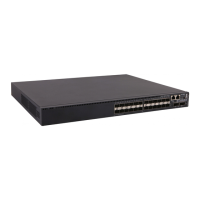
